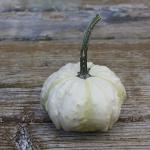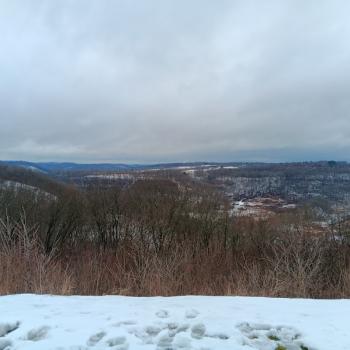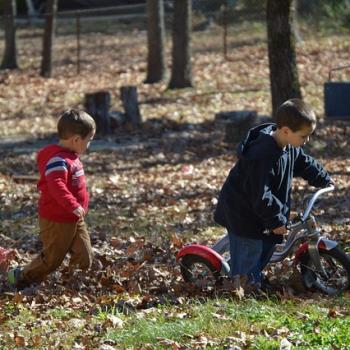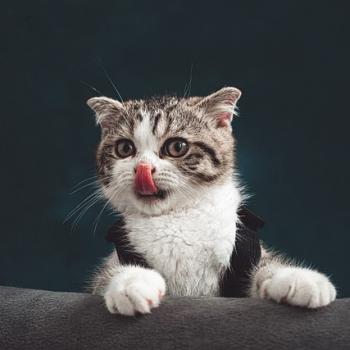
Over the weekend, one of the Lost Girls mentioned that her children were still on Thanksgiving break and she had to go to work on Monday. I offered to take her children off her hands for the day. They are a hardworking but very poor family; they live in a tiny apartment in a grim public housing block. The children take the bus to school and eat the free lunch. They don’t get to do much else. I had that museum membership and a tank full of gas, but no cash to spare. I explained my scheme to some friends of Holly the Witch, who gave me some money to buy lunch and souvenirs at the gift shop, and I picked the boys up before their mother’s shift, and we hit the road for a day of fun in the Carnegie Museum of Art and Natural History.
I’m so used to that road now: the twenty-minute stretch of sultry gray farmland between Weirton and Robinson, giving way to twenty minutes of hotels and grocery chains, before you approach the Fort Pitt Tunnel. But I hope I never, ever, ever get so old that I don’t get excited to pop through that tunnel and end up on that bridge as if it were a magical portal.
I hope I never get so old that I don’t get excited at the sight of Christmas lights twinkling on the trees in the Oakland district of Pittsburgh.
The boys were seeing it for the very first time.
There was a chorus of “Look at that building! Look at that building! Look at that building!” from the backseat as we took 376 to Forbes Avenue and into Oakland. “Look at the building!” is how I feel about Oakland as well.
After we miraculously found a parking space, we had lunch before going to the museum. And the person who said that money can’t buy happiness has never taken two little boys to Subway for cold cut sandwiches and told them they could have a cookie as well, because my friends’ money bought happiness that late morning. And then the money I spent in April buying a museum membership bought happiness, because I got all three of us into the museum, and I introduced the boys to the dinosaurs.
They had never seen dinosaurs up close before.
Here were two little children in love with dinosaurs, in the presence of the Carnegie museum’s famed apatosaurus. They circled round and round the apatosaurus, admiring that ridiculous neck and the impossible spindly rope of a tail. Then they circled round and round the diplodocus and did the same. They held up their sneakered feet to compare them with the great deep diplodocus footprint in black stone. They wondered at the tyrannosaur’s teeth and the triceratops’s horns. Again and again, they pushed the touchscreen to make the video show them what the dinosaur skeleton must have looked like with flesh on. I showed them the one fossilized femur bone that the museum welcomes guests to touch, and they touched it.
“You’re touching something that’s millions of years old,” I reminded them.
Somehow, I felt like I was in church.
We stayed with the dinosaurs for the longest time, but that wasn’t all we saw. We also went through the great display of rocks and minerals, where the excited boys called every shining yellow mineral “gold” and every piece of quartz a diamond. We went through the prehistoric mammals and then played with the biology kits in the children’s section. We went upstairs to see the African and American animal dioramas. One of the boys was so tenderhearted I had to fib to him that the taxidermized beasts had all died of old age. We played in the canoe, the igloo and the adobe house in the Hall of American Indians, while I kept harping that these cultures were not museum pieces but real people who still lived in our country. We went to the ancient Egypt display, but we didn’t stay for long, because the boys were frightened of the human mummy and sad about the mummified pet cat.
Near the end, we walked through the newly reopened wing of contemporary art. I thought this would be the difficult stretch of the trip. There wasn’t anything to touch or play with in that section, after all. But the boys were enthralled. They had to be warned to contain their exuberance half a dozen times, but they were wonderstruck. I had planned a little lecture on what an abstract was and why it’s important. Instead, I found myself saying “No, you may not touch the Upturnedhouse, you may not jump to see if you’re tall enough to reach the overhanging part, but you may walk around it and admire it.” And we did.
I tried to give my lecture on modern art again several times as we made our way through the gallery, but I only found myself saying “Look at the colors! Look at the interesting shapes! Imagine what must have been going through somebody’s head to make something like this!” which is a pretty good lecture on the whole of art history anyway.
Again, I felt as I was in church– or rather, in what I always wanted to church to be. I was in a place where the children are fed and taught and struck with wonder and awe, because it is right and just to do that for children.
I felt sad, for the hundredth time, at this agonizing deconstruction I’ve been going through, and about admitting to myself that church hasn’t been what church billed itself to be.
I felt sad for the life I’d always planned that never came to fruition. I always wanted to have seven children and take them all on regular trips to the museum to do this very thing. Due to the chronic illness I’ve only managed one, and she’s eleven now: too old to be awestruck as children are awestruck, and too young to be awestruck as adults can be. She didn’t even want to come to the museum. She was home with her father, playing Minecraft.
I let the wave of grief recede quietly, and went back to admiring bright colors.
There was just enough time for a quick trip to the gift shop with the last of the money, to buy two refrigerator magnets with paintings on them for a Christmas present for their mother: the older boy chose Van Gogh’s “Wheat Fields After Rain,” and the younger one chose “The Garden in the Rue Cortot” by Renoir.
We left the city before the rush hour traffic had properly begun. Before long we were back in cold gray Steubenville, where there is no art to speak of and certainly no dinosaurs.
Still, I’d spent several hours in a place where everything that shone was gold and diamonds and taught children awe and delight.
That’s a good day.
image via Pixabay
Mary Pezzulo is the author of Meditations on the Way of the Cross, The Sorrows and Joys of Mary, and Stumbling into Grace: How We Meet God in Tiny Works of Mercy.













